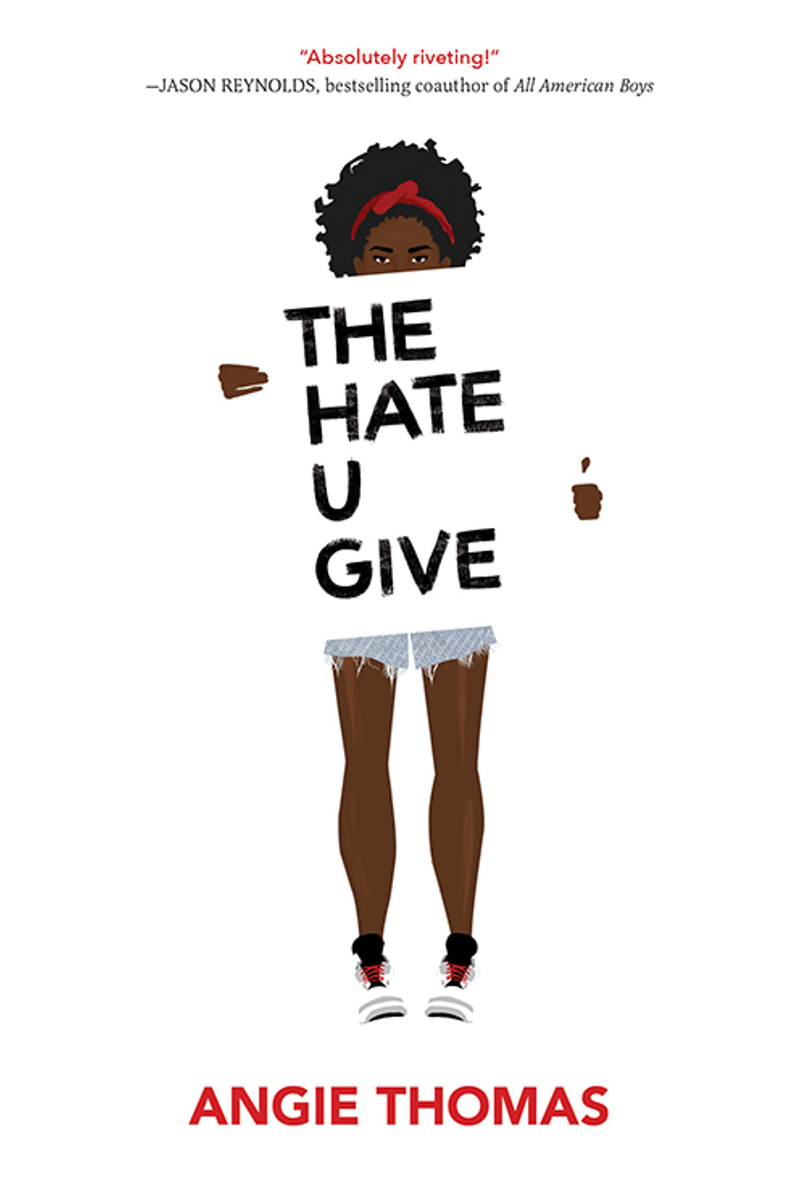
I have a troubled relationship with Young Adult fiction. I didn’t take to Harry Potter, and I’ve struggled through a number of first-person present-tense peppy novels where the threats are never that dire and the outcome never in doubt. To be clear, there are some YA novels I love, like the brilliant STRAYDOG by Kathe Koja and FENDER LIZARDS by Joe Lansdale (and that’s not even counting Lansdale’s many novels with teen protagonists that aren’t marketed as YA, such as THE BOTTOMS, THE THICKET, EDGE OF DARK WATER, A FINE DARK LINE, etc.). It’s not so much that the books I like are bleak or depressing, but rather that you don’t sense the author hovering over them like a benign deity, warding off anything that might really upset you. These books are more like life and less like a sitcom.
Sitcom elements are certainly part of Angie Thomas’s THE HATE U GIVE (2017)–the 16-year-old narrator, Starr, is obsessed with THE FRESH PRINCE OF BEL-AIR; scenes of her parents trying to dance to hip-hop are intentionally comic; the dialog flirts at times with preciousness. Starr’s first-person present-tense voice, full of slang and pop-culture references might, in some other novel, seem to be pandering to its teenage audience. In this novel, the voice sets you up for one visceral shock after another, starting fewer than 25 pages into it, when one of the characters is shot to death as Starr helplessly looks on.
Starr’s parents love her unconditionally and demonstratively. But they have their own complicated issues, and you never know when a bantering argument between them is going to turn personal and hurtful. Friendships sour and don’t recover. Innocence is lost, and dreams die.
This is a novel about racism in Anytown, USA.
When it really counts, Thomas does not pull her punches. Rather than a benign deity, she is a righteous recording angel with an attitude, as if asking the reader over and over, “You got a problem with that?”
Case in point: There are a number of true heroes in THE HATE U GIVE, but none more complex or intriguing than Starr’s father, Maverick. He is massive, tattooed, a former gang member, a former drug dealer, and an ex-convict. He reveres Malcolm X and teaches his kids the ten-point program of the Black Panther party. (And may I just say what a pleasure it is to see the Panthers, possibly the most misunderstood and misrepresented political group in history, portrayed so positively?) He keeps his Glock close at hand and has no qualms about using it in self-defense. He is not a character intended to sit comfortably with mainstream white America.
The plot of the book could not be more timely: a white cop has shot a young, unarmed Black man in the back. Thomas shows us a good cop in Starr’s Uncle Carlos, but she doesn’t pretend he’s representative. When word gets out about the shooting, there are riots, and there are Black people in those riots who smash windows and loot TV sets. But Thomas takes the time to tell us why.
The violence at the climax of the book is harrowing, all the more so because Thomas has let us know that anything can happen. And if the ending is perhaps a little neat, the losses are not forgotten or downplayed.
Thomas’s rendering of dialect (see my review of WENCH) is superb–understated, but rhythmic, colorful, and convincing. She has a genuine gift for delineating fully rounded characters through a few well-chosen details and through the words they speak.
I love the feeling of being deep in a book that has taken over my consciousness, that makes me pause during the day and look forward to getting back to it, to going over what I’ve just read as I fall asleep, to wanting to talk about it with my friends. THE HATE U GIVE is that kind of book. And more–it might just be essential reading.
Thanks, and a tip of the cappello, to Seba Pezzani for the recommendation.


